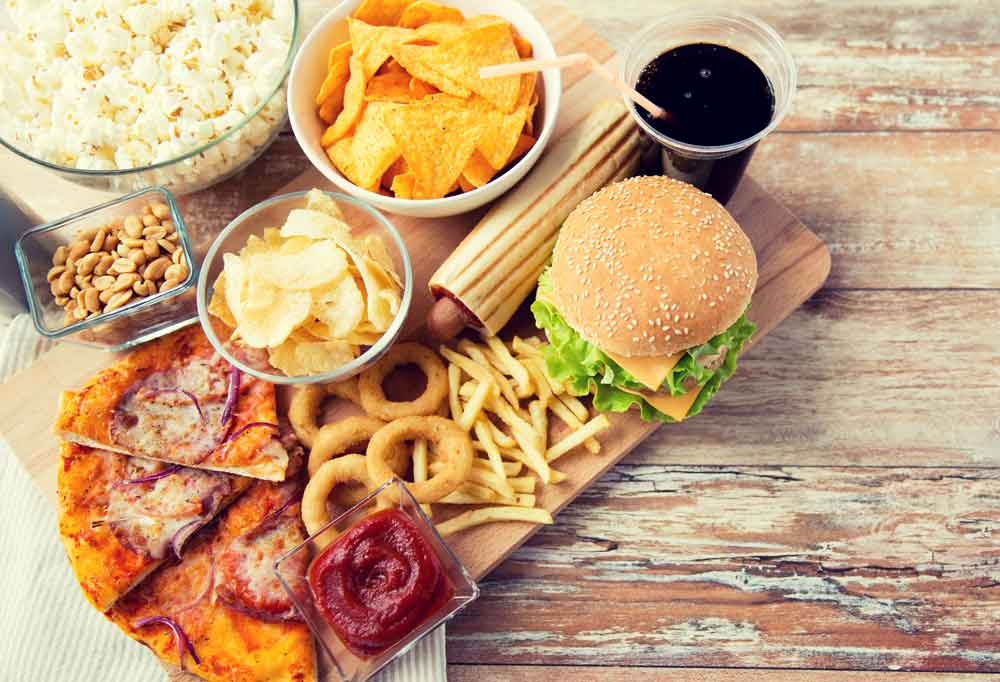Case Study: The Hangry Junk Food Fan

Rob Walter was frustrated. The former football player had originally turned to endurance sports for stress release, health benefits, and an energy boost, but was no longer reaping the benefits. Instead, he was feeling lethargic, heavy, and hangry.
Meet the Athlete
 Rob Walter
Rob Walter
Dublin, Ohio
43 years old
6’1”, 220 pounds
Years in the sport: 6
Occupation: Dentist
Triathlon coach: Lauren Vallee of Base Tri Fitness
Favorite distance: 70.3
The Diet
Rob tended to think like this: “I just rocked a brick session, I deserve fast food, dessert, [insert indulgence here].” To make matters worse, he had a dislike of vegetables and health food, and had absolutely no plan when it came to fueling for long workouts. Having signed up for his first Ironman, he was getting nervous that he’d be running himself into the ground and hitting the wall with every workout.
The Expert Assessment
Rob tended to think like this: “I just rocked a brick session, I deserve fast food, dessert, [insert indulgence here].” To make matters worse, he had a dislike of vegetables and health food, and had absolutely no plan when it came to fueling for long workouts. Having signed up for his first Ironman, he was getting nervous that he’d be running himself into the ground and hitting the wall with every workout.
The Plan for Success
Step 1. Improve overall diet quality
Aside from the occasional piece of fruit, Rob’s plate had no rainbow effect and was instead, well, tan. Because fruits and vegetables offer micronutrients, filling fiber, and essential carbohydrates, Rob started including a serving or two of fruit and vegetables at every meal; he often incorporated them into smoothies, along with protein powder, to boost overall nutrient intake and get him closer to his goal of 1⁄2-1g of protein per pound of lean body weight. The nutrition revamp also helped with satiety and muscle repair.
Step 2: Recover right
To make the most of every workout and fend off muscle breakdown and soreness, Rob needed to take in 30g of protein and 60-120g of carbohydrates within an hour, post-workout. Protein, as mentioned, helps repair muscles, while carbohydrates restock muscle glycogen stores—both critical for prepping the body for more workouts. Smoothies soon became Rob’s go-to recovery, with the added benefit of keeping him hydrated.
Step 3. Don’t overlook hydration
Past performance showed that Rob was a victim of dehydration and cramping any time he didn’t include enough electrolytes and overall fluid in his training and racing. First, Rob had to first perform a sweat test (see right). This test showed how much fluid he was losing over an hour, which helped him plan ahead for the amount of bottles he would need in bike cages and decide how many sealed bottles to stash roadside during long runs. Rob aimed to keep his fluid loss under 1 percent of his bodyweight, knowing somewhere around 2 percent can negatively affect mood, the ability to stay cool, and recovery.
Step 4. Fuel steady on race day
We determined he’d need 60+ grams of carbs per hour to carry him over 140.6 miles. Because he likes gels, he decided to take one gel every 45 minutes anytime he went longer than 90 minutes.
The Outcome
Through training and a boost of nutrition knowledge and quality, Rob soon began to feel energized for workouts and races. With better diet choices, Rob was also able to shed 20 pounds and shave significant time off of his PRs, from cutting 14 minutes off of his half marathon to earning an 11:18 Ironman finish.
Simple Sweat Rate Test
1. Pee, then weigh yourself.
2. Swim, bike, or run for 30 minutes—no fluids.
3. Weigh yourself again.
4. Repeat on different days for each sport.
Every pound lost is roughly equivalent to 16 ounces of fluid loss. Double your result to estimate your sweat rate per hour for each sport. You do not need to replace every ounce of fluid lost during exercise, but knowing your sweat rate will give you a good point of reference for about how much fluid you should consider drinking.